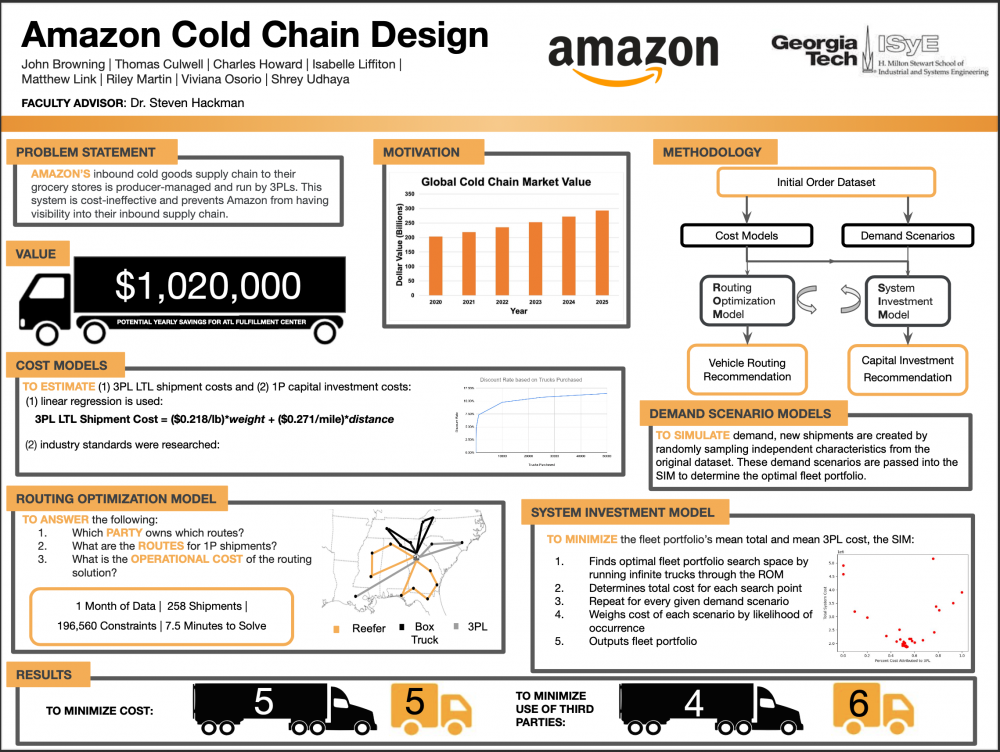Client Context
Amazon Freight consists of 30,000 first-party trailers servicing more than 110 fulfillment centers across the United States. In 2007, Amazon expanded into the grocery delivery sector with the founding of their grocery delivery services, the acquisition of Whole Foods Market, and other grocery ventures. Amazon’s grocery services have created a new business need for the company: a supply chain for delivering refrigerated goods, as Amazon Freight does not have the infrastructure or equipment necessary to handle the logistical considerations associated with shipping refrigerated goods. The lack of an in-house cold chain network results in delayed orders, third party overhead costs passed to Amazon and their clients, and lack of supply chain visibility.
Project Objective
The motivation of this project is the rapid projected growth of the cold chain market in the next five years, to increase control of their customer experience, and have better insight into where their shipments are and when. By developing a first-party cold-chain supply network, Amazon can capitalize on a growing cold chain market while increasing their supply chain visibility. In order to create an in-house cold chain network, it’s necessary to map ideal routes, decide which routes should be taken by a third party logistics carrier or by Amazon, and how many trucks should be purchased by Amazon to shape their fleet portfolio.
Design Strategy
To develop this cold chain network, a dual component computational engine with supporting models will be implemented to find the ideal routes and the appropriate shipper. The first component, the Routing Optimization Model, finds the ideal routes for each shipment and allocates it to either a third party or first party truck. The second component, the System Investment Model, finds the ideal fleet portfolio, or the best mix of first party trucks to carry out shipments. The supporting models include a cost model to find 3PL costs that are unknown to Amazon because they are not in the industry, as well as a demand scenario model to simulate future demand and find the ideal fleet portfolio given expected change in demand over time. The engine was tested manually by conducting a manual inspection of the solution and ensuring all constraints were followed on each route.
Deliverables
Amazon will receive the entire computational engine: the ROM, SIM, cost, and demand scenario models. They can use this to continue to plan routes and make strategic decisions on truck acquisition. Route plans are delivered in the form of driver and managerial views. Driver views detail which orders a driver is in charge of, the weight and volume of their truck throughout their delivery, the temperature of each shipment, and the arrival and pickup times required for each shipment to be on time. Managerial views feature all trucks, which shipments each truck carries on each route, over what period of time. Amazon will also receive a fleet portfolio recommendation for the next two years. With these tools, Amazon can build their in-bound cold chain network.


